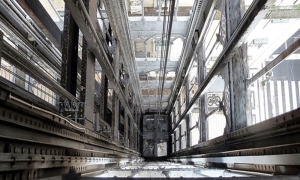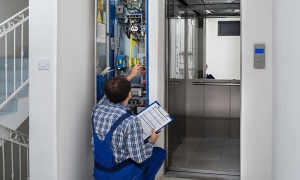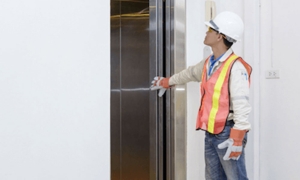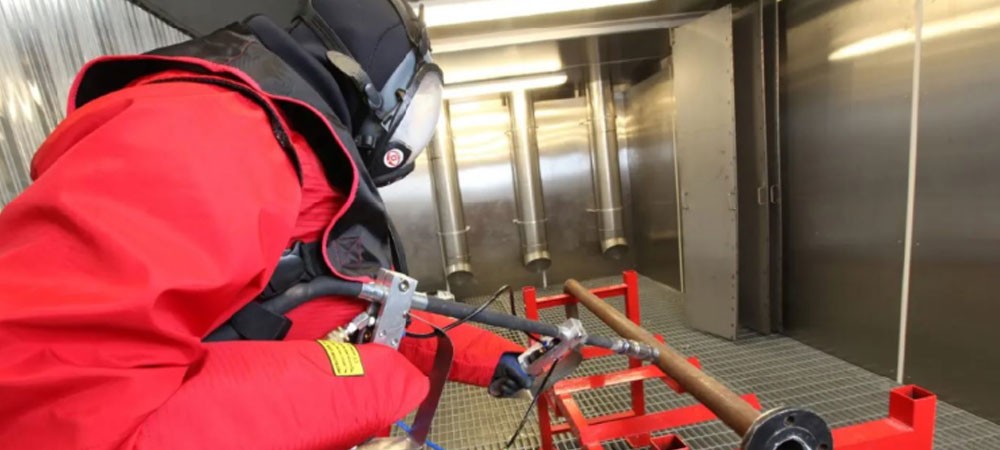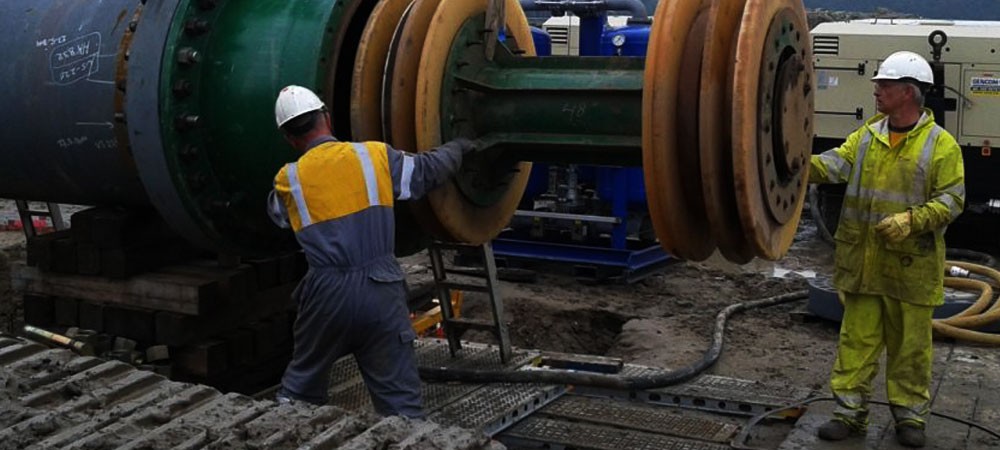Lift Maintenace
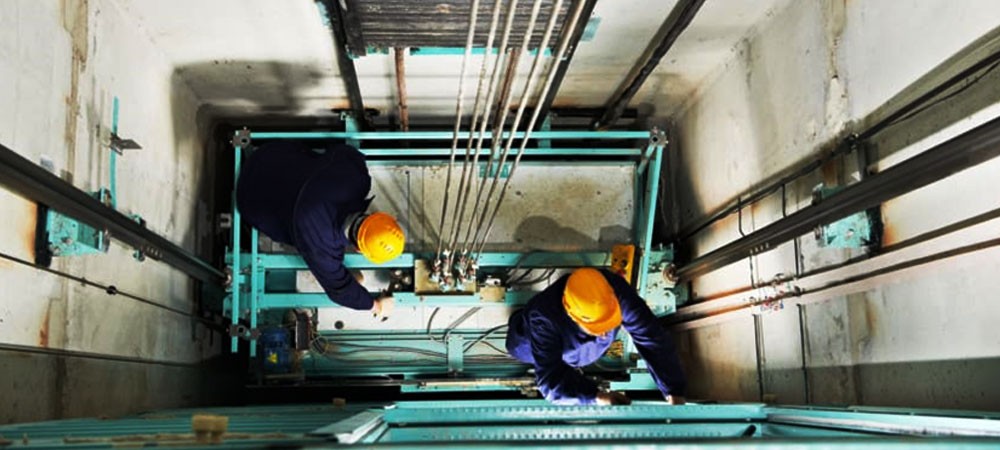
Lift Maintenace
The Lift/elevators in your building should continue to offer your tenants dependable, safe service if they are kept in good operating order. However, not all property owners give elevator maintenance and inspections the priority they ought to. Because of this, improper maintenance is one of the main reasons accidents involving this equipment occur. Regular inspections are necessary to help assure the highest levels of elevator safety.
The secret to a successful inspection is having a strategy and always adhering to it. For anyone in charge of lift maintenance, an elevator maintenance checklist can be a very helpful tool. Without it, workers run the danger of failing to notice any of the little but significant components that ought to be checked during such inspections.
For instance, the emergency stop button is a crucial but minor interior component. It might be disastrous for anyone riding if this is not checked as part of routine lift maintenance. Another crucial step is to make sure the pit area is clear of any obstacles, especially since construction workers who build, and repair elevators suffer the most injuries.
Inside the Car
- Ensure the doors can open and close freely and without obstructions.
- Look for signs of damage on the ceiling, handrails, and walls.
- Find and replace any burned-out lights, including in the control panel.
- Confirm that the emergency phone connects quickly with 911 or the local fire department.
Outside the Car
- Replace any lights that have burned out on each floor.
- Inspect the door panels and clearances.
- Test the smoke detector and fire alarm system.
In the Machine Room
- Test the smoke detector and fire alarm system.
- Check oil levels and ensure all systems are properly lubricated.
- Examine electrical wiring for signs of fraying or defects.
- Make sure there is adequate headroom for technicians.
- Remove anything that interferes with access to the equipment.
On Top of the Car
- Ensure the emergency exit hatch is easily accessible.
- Test the brakes and inspect the mechanism to make sure it is in good condition.
- Check cables for signs of wear.
- Look for signs of rodents or vandalism along the hoistway.
In the Pit
- Make certain the area has proper access.
- Inspect the pit to make sure it has the necessary clearance.
- Check the car frame for signs of damage.
LIFT MAINTENANCE SERVICES
Our installation team will always tell customers that installing a new lift is just the first step; regular maintenance and servicing are essential to ensure great performance for passengers, legal compliance, and most important peace of mind that your lift is operating at optimum efficiency and safety.
The regular maintenance checks our lift engineers carry out combine detailed inspections of the interior and exterior of the passenger cabin, and checks on the machine room, the shaft, and the pit.
All our skilled maintenance engineers have extensive experience in ensuring the ongoing safety of lift installations, but they all work to a standard checklist that acts as their guide:
Passenger Cabin Lift Maintenance
- Check and replace exterior call button lights,
- Check lift door panels and clearance,
- Check on the firefighter lift controls,
- Operate the lift to check for smooth and accurate acceleration, deceleration, and leveling,
- Inspect the lift door to ensure that it does not slam or bounce when closing and that the door restrictor works effectively,
- Check position indicators and replace burnt-out lights,
- Examine the cabin interior for damage or wear and tear to the ceiling, handrail, floor, and walls.
Once the passenger cabin maintenance check is complete, our EMBARK engineer will make any immediate repairs or enhancements. If more extensive repairs are required, these will be detailed in the report and scheduled.
Top of the Cabin
- Remove any debris that has accumulated on the top of the cabin,
- Examine the lift shaft for any evidence of vandalism, rodents or pests,
- Inspect the stop switch and the cabin top inspection station,
- Check the cabling for wear and tear, and examine all connections,
- Inspect the door operator and all components connected to it,
- Check the guide rails, rollers, and leveling devices.
EMBARK'S engineers will always clear any accumulated debris that might be a safety hazard, and ensure that all working components are clean, lubricated, and free from dirt.
Machine Room Lift Maintenance
- Ensure that the machine room is clean and clear of any inappropriate materials,
- Inspect all components for any evidence of wear, unexpected vibration, or leakage,
- Check all electrical components for signs of failure, wear and tear, or overheating,
- Oil level check,
- Carry out component lubrication where, and if necessary.
Our EMBARK engineers will always repair faulty machine room components immediately where possible. Their report will make recommendations as to any follow-on repairs that should treat as a priority, and more long-term component replacements or lift upgrades.
Pit Lift Maintenance
- Check GFI outlet, stop switch and lights are working,
- Inspect the lift cable for any snags or signs of wear,
- Examine the condition of guide rails, rollers, and switches,
- Check sump pump operation and clean,
- Inspect spring buffers are securely attached. Check for correct alignment, and signs of corrosion.
If any components are showing wear and tear, the EMBARK engineer will flag up a concern, and schedule remedial action at an appropriate time.
A faulty lift can be a financial drain on your business especially if you need emergency repairs and lifts that are not serviced regularly are a safety hazard for passengers. EMBARK provides a range of maintenance and servicing packages, guaranteeing the highest standards of care and safety for your business and your passengers.
LIFT MAINTENANCE SERVICES
Lifts/Elevators are important building systems, crucial for the normal functioning of any building they are a part of. Consequently, elevator maintenance is an integral part of overall building maintenance and should never be overlooked.
Before the invention of the modern elevator by Elisha Otis, buildings did not boast as many floors as they do today. If you think about it, elevators are the reason why skyscrapers can exist. They are integral to everyday life for millions of people worldwide.
Those who plan to neglect elevator maintenance should first consider the following factors:
- Safety: Performing routine maintenance on elevators is required to ensure safety for passengers and all building users. A breakdown of the elevator can be catastrophic, and it must be avoided.
- Operation: Elevators have a very important purpose. When they are out of service, they will cause inconvenience and frustration at best. At worst, they can interrupt business operations and cause operational losses and reputational damage.
- Costs: Fixing and/or replacing broken elevators is costly, running into tens or even hundreds of thousands of dollars. Regular maintenance can prevent such scenarios and increase the useful life of these building assets.
- Regulations: There are regional laws and regulations stipulating the frequency of maintenance inspections for elevators. Some regions even require buildings to display the date of their last maintenance inspection inside the elevator.
Lift/Elevators are complex systems with thousands of moving parts. You need specialized knowledge to maintain them and fix the most recurring issues like:
- Stuck or malfunctioning elevator doors
- Problems with elevator automation systems
- Replacement of worn-out elevator cables
- Problems with the hydraulic system
As you can imagine, these problems can take hours/days to fix. The repairs have to be performed by certified technicians that can charge north of $300/hour. Replacement parts will also test your budget as they must be sourced from the original equipment manufacturer (OEM).
In most cases, having certified technicians as full-time employees is not feasible from a cost perspective. Therefore, the maintenance of elevators is often outsourced to servicing companies that specialize in elevator maintenance.
Lift/Elevator maintenance must be done according to the recommendations from the OEM and the vendor that installed the elevator in the building. You also must make sure that the lift maintenance aligns with the local regulations concerning lift maintenance.
The elevator system consists of three distinct physical parts:
- The elevator machine room
- The hoistway
- The elevator car
There are various preventive maintenance tasks that should be performed for each part.
LIFT MAINTENANCE SERVICES
Lift/Elevator maintenance is a systematic inspection carried out by service technicians to keep elevators in good working condition. The process involves finding, diagnosing, and fixing problems before they cause system breakdown, malfunction, or shutdown. Life/Elevator maintenance is usually performed at least once a month to prevent costly repairs and sustain asset lifespan. A lift/elevator maintenance checklist is a tool used in the examination of mechanical, structural, electrical, and safety systems to ensure that elevators function properly and operate safely.
Lift/Elevator preventive maintenance inspections are critical in ensuring compliance with building regulations and ensuring all equipment is in good working condition. Lift/Elevator malfunctions can inconvenience tenants, cause costly repairs, and create safety hazards. Performing regular lift/elevator maintenance inspections can mitigate these risks.
Regular maintenance checks provided by lift/elevator inspection companies help ensure public safety and guarantee smooth and efficient building operations. Further, lifts/elevators that are well maintained also significantly increase the marketability of properties and lessen the risk of liability issues and tenant dissatisfaction. It is crucial for lift/elevator inspection service firms to choose the right technology that can aid their technicians in providing efficient inspections.
A lift/elevator maintenance checklist is a tool used by service technicians to ensure the safety of lifts/elevators before their operational use. It is used to record the inspection details including inside the car, the top of the car, and the machine room. It helps assess potential risks that could cause equipment defects and malfunctions.
The Occupational Health and Safety Administration (OSHA) and the American Society of Mechanical Engineers (ASME) work in conjunction to establish maintenance requirements for lifts/elevators. Below are the following requirements to include on your elevator maintenance checklist:
- Inspect and repair operating components.
- Clean, lubricate, and adjust all the elevator components.
- Execute electrical equipment tests of electrical wiring.
- Check the lift/elevator speed and ensure the telephone is operational.
- Maintain safety equipment such as door operation.
Elevators should be inspected on a periodic basis and preventive maintenance can be done monthly depending on the usage of the lift/elevator.
Here are the top 3 tips for lift/elevator maintenance inspection:
- Communicate with tenants:
Let tenants know that scheduled maintenance is occurring, and use signs and notices. Avoid high foot traffic periods and always ensure alternative lifts/elevators or stairs are available. Include signage on all key floors that the lift/elevator stops at.
- Perform the Inspection:
Performing a lift/elevator equipment audit helps determine the condition of equipment, the types of necessary repairs, and other services needed. Inspect below major parts to ensure elevator safety:
- Inside the car: Check the condition of signs and operating device symbols, button functions, ventilation, lighting, and car door force when opening and closing. Ensure emergency devices are available and in good working condition.
- Top of the car: Examine if the travel cables and hoistways are operational and properly adjusted. Apply the appropriate lubrication for rails, governor ropes, suspension means, chains, etc.
- Inspect machine room: It is crucial to assess the conditions of equipment in the machine room. Supply the required lubrication to the suspension means, gears, bearings, and other mechanical equipment that needs lubricating
- Prepare report:
Complete a comprehensive report of the inspection including photos of any equipment defects and a description of any operational issues. Well-documented reports are required for regulatory compliance, fire safety requirements, and maintenance logs.
